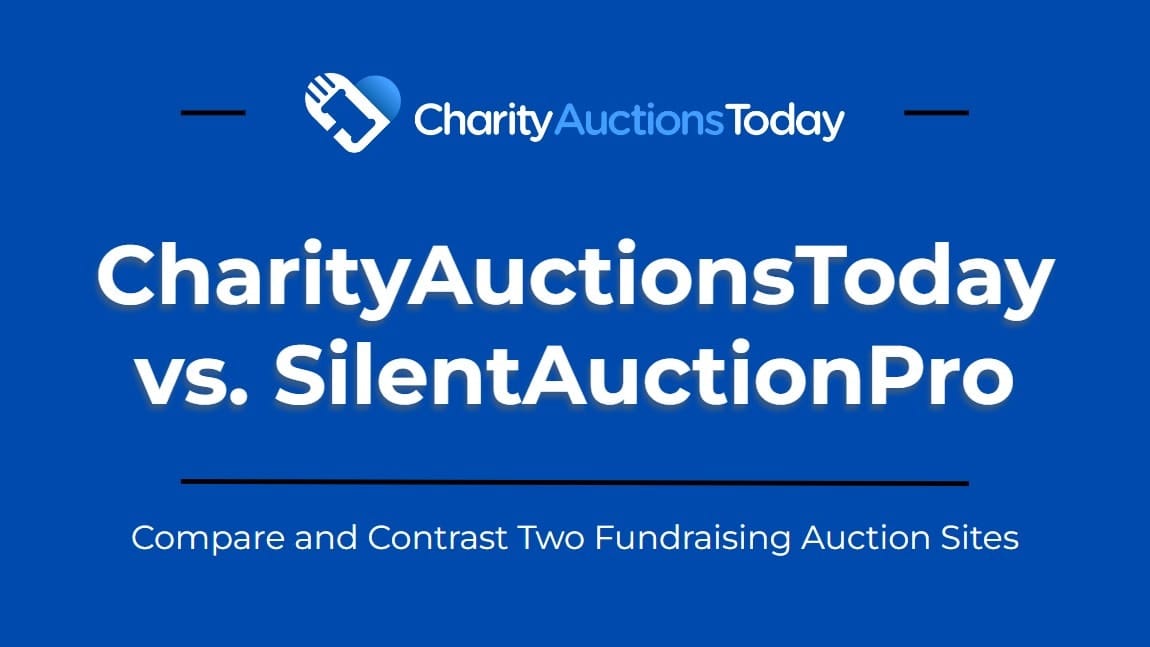Planned giving, also known as legacy giving, is a type of charitable giving that involves making a commitment to donate assets to a nonprofit organization at a future date. This type of giving allows individuals to leave a lasting impact on their favorite charities and causes, while also providing potential tax benefits and financial planning advantages.
In this comprehensive guide, we will explore what planned gifts are, the different types of planned gifts, and how you can incorporate philanthropic planning into your financial strategy.
Planned Gifts Plant Seeds — Launch Your Auction to Harvest Support
You now understand how donors can leave lasting impact. Amplify that legacy — launch an auction to engage your community now and complement long-term giving with immediate momentum.
Launch Your Legacy AuctionWhat Are Planned Gifts?
Planned gifts are donations that are arranged in the present but are not received by the nonprofit organization until a future date. These gifts are typically made through a will or trust, and can include assets such as cash, securities, real estate, or other valuable property.
Planned gifts are different from traditional donations, as they require more thought and planning. They are often made as part of an individual's estate planning process, and can have significant tax benefits for both the donor and the nonprofit organization.
Types of Planned Gifts
There are several types of planned gifts, each with its own unique benefits and considerations. Some of the most common types of planned gifts include:
Bequests

A bequest is a gift made through a will or trust, and is one of the most popular forms of planned giving. This type of gift allows individuals to leave a specific dollar amount or percentage of their estate to a nonprofit organization.
Bequests can be made in a variety of ways, including:
- Specific bequest: A specific dollar amount or asset is designated to the nonprofit organization.
- Residuary bequest: The nonprofit organization receives a percentage of the remaining estate after all other bequests and expenses have been paid.
- Contingent bequest: The nonprofit organization receives the gift only if certain conditions are met, such as the death of the primary beneficiary.
Charitable Remainder Trusts
A charitable remainder trust (CRT) is a type of trust that allows individuals to donate assets to a nonprofit organization while still receiving income from those assets during their lifetime. After the individual's death, the remaining assets are then transferred to the nonprofit organization.
CRTs can be set up in two ways:
- Annuity trust: The donor receives a fixed annual income from the trust.
- Unitrust: The donor receives a percentage of the trust's value each year, which can increase if the trust's value increases.
Charitable Lead Trusts
A charitable lead trust (CLT) is the opposite of a CRT, in that the nonprofit organization receives income from the trust during the donor's lifetime, and the remaining assets are then transferred to the donor's beneficiaries after their death.
There are two main types of CLT:
- Grantor: This form of CLT allows the grantor (donor) to take an income tax charitable deductible immediately. This deductible would be equal to the current value of the future payments that will be made to the charitable organization.
- Non-grantor: In this CLT the trust is considered the owner of the trust’s assets, rather than the grantor. The grantor cannot therefore make a deductible, but there are transfer tax benefits to this arrangement.
Life Insurance Policies

Life insurance policies can also be used as a planned giving tool. Donors can name a nonprofit organization as the beneficiary of their policy, or they can transfer ownership of the policy to the nonprofit organization during their lifetime.
Benefits of Planned Gifts
Planned gifts offer several benefits for both the donor and the nonprofit organization. Some of the most significant benefits include:
- Tax benefits: Planned gifts can provide significant tax benefits for donors, including income tax deductions and estate tax deductions.
- Legacy: Planned gifts allow individuals to leave a lasting impact on their favorite charities and causes, ensuring their legacy lives on.
- Financial planning: By incorporating planned giving into their financial strategy, individuals can ensure their assets are used in a way that aligns with their values and goals.
How to Incorporate Philanthropic Planning into Your Financial Strategy
Incorporating philanthropic planning into your financial strategy can be a meaningful and rewarding experience. Here are some steps to help you get started:
Identify Your Values and Goals
The first step in incorporating philanthropic planning into your financial strategy is to identify your values and goals. What causes are important to you? What impact do you want to make in the world? By understanding your values and goals, you can determine which nonprofit organizations align with your beliefs and make a more significant impact.
Research Nonprofit Organizations
Once you have identified your values and goals, it's time to research nonprofit organizations that align with them. Look for organizations that have a strong track record of making a difference in their respective causes and have a solid financial standing. Sites like Charity Navigator can help you assess nonprofits.
Consult with a Financial Advisor

Consulting with a financial advisor can help you determine the best way to incorporate philanthropic planning into your financial strategy. They can provide guidance on the tax benefits of different types of planned gifts and help you create a plan that aligns with your financial goals.
Communicate with Your Family
It's essential to communicate your philanthropic plans with your family to ensure everyone is on the same page. This can help avoid any potential conflicts or misunderstandings in the future.
Real-World Examples of Planned Giving
Planned giving has been used by many individuals to make a lasting impact on their favorite charities and causes. Here are some real-world examples of planned giving:
Warren Buffett
Warren Buffett, one of the world's most successful investors, has pledged to donate “99%-plus” of his wealth to his charitable trust upon his death. Though his three children will be the trustees, Buffet states that the “trust’s charter will be broad.” As someone who has shown a dedication to personal philanthropy, his legacy will no doubt be a long one.
Joan Kroc
Joan Kroc, the widow of McDonald's founder Ray Kroc, left a $1.8 billion bequest to The Salvation Army when she died in 2003. Her gift has helped fund the construction of community centers across the United States, providing resources and support to underserved communities.
Plan a Lasting Legacy
Planned giving is a powerful tool that allows individuals to leave a lasting impact on their favorite charities and causes. By incorporating philanthropic planning into your financial strategy, you can ensure your assets are used in a way that aligns with your values and goals, while also providing potential tax benefits. Consider consulting with a financial advisor to determine the best planned giving options for you and your family.
While most of us cannot hope to plan gifts on the scale of Warren Buffet or Joan Kroc, it’s important to remember that even small gifts can have a big impact on the charities we support. For example, some nonprofits will accept donated vehicles in addition to planned gifts of cash, securities, or real estate. Investigate how you can make a difference with the money and assets you can’t take with you.
Frequently Asked Questions
What are planned gifts?
Planned gifts are donations arranged now and realized later (or over time) through a will, beneficiary designation, or a gift vehicle that can provide income or tax benefits. They help donors make larger, more strategic gifts while supporting your mission for the long term.
Why should our nonprofit offer planned giving options?
- Diversifies revenue beyond annual fundraising.
- Unlocks larger gifts tied to assets, not just cash flow.
- Strengthens donor loyalty and lifetime value.
- Builds a predictable future pipeline (legacy commitments).
What are the most common types of planned gifts?
- Bequests in wills or living trusts.
- Beneficiary designations (retirement plans, life insurance, DAFs).
- Gifts of appreciated securities or real estate.
- Charitable Gift Annuities (CGA).
- Charitable Remainder Trusts (CRT) and Charitable Lead Trusts (CLT).
- Retained life estates and other split-interest gifts.
How does a bequest in a will or trust work?
A donor includes your organization in their will or living trust. They can give a specific amount, a percentage, or the residue after other gifts and expenses. Bequests are revocable during the donor’s lifetime and often form the backbone of legacy programs.
Do you have sample bequest language we can share? (General information)
You can provide a simple template such as: “I give [specific amount or % of estate] to [Legal Name], [Tax ID], [Address] to be used for its general purposes.” Encourage donors to consult their advisors and use your organization’s full legal name and EIN. This is general information, not legal advice.
What is a beneficiary designation and which assets qualify?
Donors can name your organization as a beneficiary of retirement plans (e.g., IRA, 401(k)), life insurance policies, or donor-advised funds (DAFs). It often involves a simple form from the account provider and can be updated without revising a will.
Why do donors give appreciated stock or other non-cash assets?
Non-cash assets like publicly traded stock may allow donors to support your mission using gains they’ve built over time. These gifts can be efficient compared with selling first, depending on individual circumstances. Donors should consult their own advisors.
What is a Charitable Gift Annuity (CGA)?
A CGA is a contract where a donor makes a gift and receives fixed payments for life for one or two people. After the payment term, the remainder supports your cause. Payout rates, minimums, and eligibility vary by organization and jurisdiction.
How does a Charitable Remainder Trust (CRT) work?
A donor funds a trust that pays income to the donor or others for life or a term of years. When the trust ends, the remainder goes to your organization. CRTs can be structured for fixed payments or a percentage of annual trust value.
What is a Charitable Lead Trust (CLT) and who might consider it?
A CLT pays your charity for a set term, then the remaining assets pass to heirs or back to the donor. It’s often used in estate planning for families interested in near-term charitable impact and potential transfer planning advantages, subject to professional advice.
What is a retained life estate gift of a home or property?
A donor deeds a residence or farmland to your organization but keeps the right to live there for life (or a term). After the term, your charity owns the property outright. Maintenance responsibilities should be clearly documented in your gift acceptance policy.
What is a Qualified Charitable Distribution (QCD) from an IRA? (General information)
A QCD is a direct transfer from an eligible individual’s IRA to a qualified charity. It can be a tax-efficient way for some donors to give, depending on current rules. Donors should check current IRS guidance and consult their advisors. This is general information, not tax advice.
How do donor-advised funds (DAFs) fit into planned giving and legacy gifts?
DAFs allow donors to recommend grants to your organization now or name you as a beneficiary for future distributions. Provide your legal name and tax ID so donors can easily recommend a grant or set a legacy designation with their DAF sponsor.
How can donors use life insurance to make a planned gift?
- Name your charity as a beneficiary on a policy.
- Transfer ownership of an existing policy (subject to review).
- Purchase a new policy with your charity as owner/beneficiary (advanced planning).
Policies should be reviewed under your gift acceptance guidelines.
Who typically makes planned gifts to a nonprofit like ours?
Loyal supporters who value your mission—often long-time annual donors or volunteers. They may hold appreciated assets, want lifetime income, or wish to leave a legacy without affecting current cash needs.
How should we recognize planned giving donors during their lifetime?
Create a legacy society with benefits such as listing (with permission), special updates, and invitations. Steward with gratitude, mission stories, and periodic check-ins to keep records current.
What policies do we need before marketing planned gifts? (General information)
- Gift acceptance policy (which assets you’ll accept and conditions).
- Minimums and payout standards for CGAs or trust gifts (if offered).
- Procedures for valuing, managing, and liquidating non-cash assets.
This is general information, not legal advice.
How can we promote planned giving without overwhelming donors?
- Add a “Ways to Give” page with clear, friendly language.
- Include a simple bequest paragraph in newsletters and emails.
- Share short legacy stories that focus on impact, not technical jargon.
How do we track revocable vs. irrevocable planned gifts internally?
Many teams record revocable commitments (e.g., bequests) separately from irrevocable gifts (e.g., funded CGAs/CRTs). Work with your finance team on documentation, valuation, and reporting conventions. This is general information, not accounting advice.
What’s a simple checklist to start a planned giving program this year?
- Confirm legal name, EIN, and basic gift acceptance policy.
- Create a “Legacy Giving” webpage and one-page PDF.
- Train staff to listen for legacy cues and thank inquiries warmly.
- Launch a legacy society and recognition plan.
- Invite donors to notify you of their intentions (non-binding form).
Planned gifts involve legal, tax, and financial considerations—donors should consult their own professional advisors. This is general information, not legal or tax advice.
💡 Try this in ChatGPT
- Summarize the article "What are Planned Gifts?" from https://ghost.charityauctionstoday.com/p/what-are-planned-gifts/ in 3 bullet points for a board update.
- Turn the article "What are Planned Gifts?" (https://ghost.charityauctionstoday.com/p/what-are-planned-gifts/) into a 60-second talking script with one example and one CTA.
- Extract 5 SEO keywords and 3 internal link ideas from "What are Planned Gifts?": https://ghost.charityauctionstoday.com/p/what-are-planned-gifts/.
- Create 3 tweet ideas and a LinkedIn post that expand on this FAQ topic using the article at https://ghost.charityauctionstoday.com/p/what-are-planned-gifts/.
Tip: Paste the whole prompt (with the URL) so the AI can fetch context.
Tom Kelly
Tom Kelly, TEDx speaker and CEO of CharityAuctions.com, helps nonprofits raise millions through auctions and AI. He hosts The Million Dollar Nonprofit podcast and inspires leaders to live their legacy, not just leave it.
Table of contents
Create Your Auction
Raise 40% more with smart bidding tools






